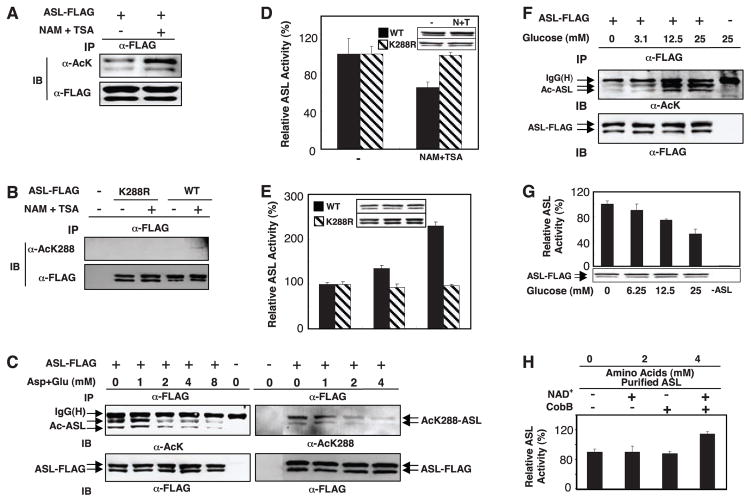Fig. 3.
Inactivation of ASL by acetylation. (A and B) ASL acetylation. FLAG-tagged ASL or ASLK288R was overex-pressed in HEK293T cells, immunoprecipitated, and probed with antibody to acetyllysine (A) or to acetyl-Lys288 (B). (C) Inhibition of ASL acetylation by extra amino acids. ASL was immunoprecipitated from transfected HEK293T cells, which were treated with various amino acid concentrations. (D) Inhibition of ASL in response to NAM and TSA. Wild-type and mutant ASL-K288R (132% of wild-type activity) proteins were expressed in HEK293T cells that were treated with NAM and TSA as indicated. Activity of immuno-precipitated ASL was normalized to total protein. (E) Requirement of Lys288 acetylation for ASL activation by amino acids. Wild-type and mutant ASL proteins were overexpressed in HEK293T cells incubated in medium containing various amino acid concentrations. (F and G) Effects of glucose on acetylation and activity of ASL. ASL was overexpressed in HEK293T cells that were treated with various concentrations of glucose. Acetylation and activity of immunoprecipitated ASL were determined. (H) Activation of ASL by in vitro deacetylation. In vitro deacetylation was similar to Fig. 2I.

